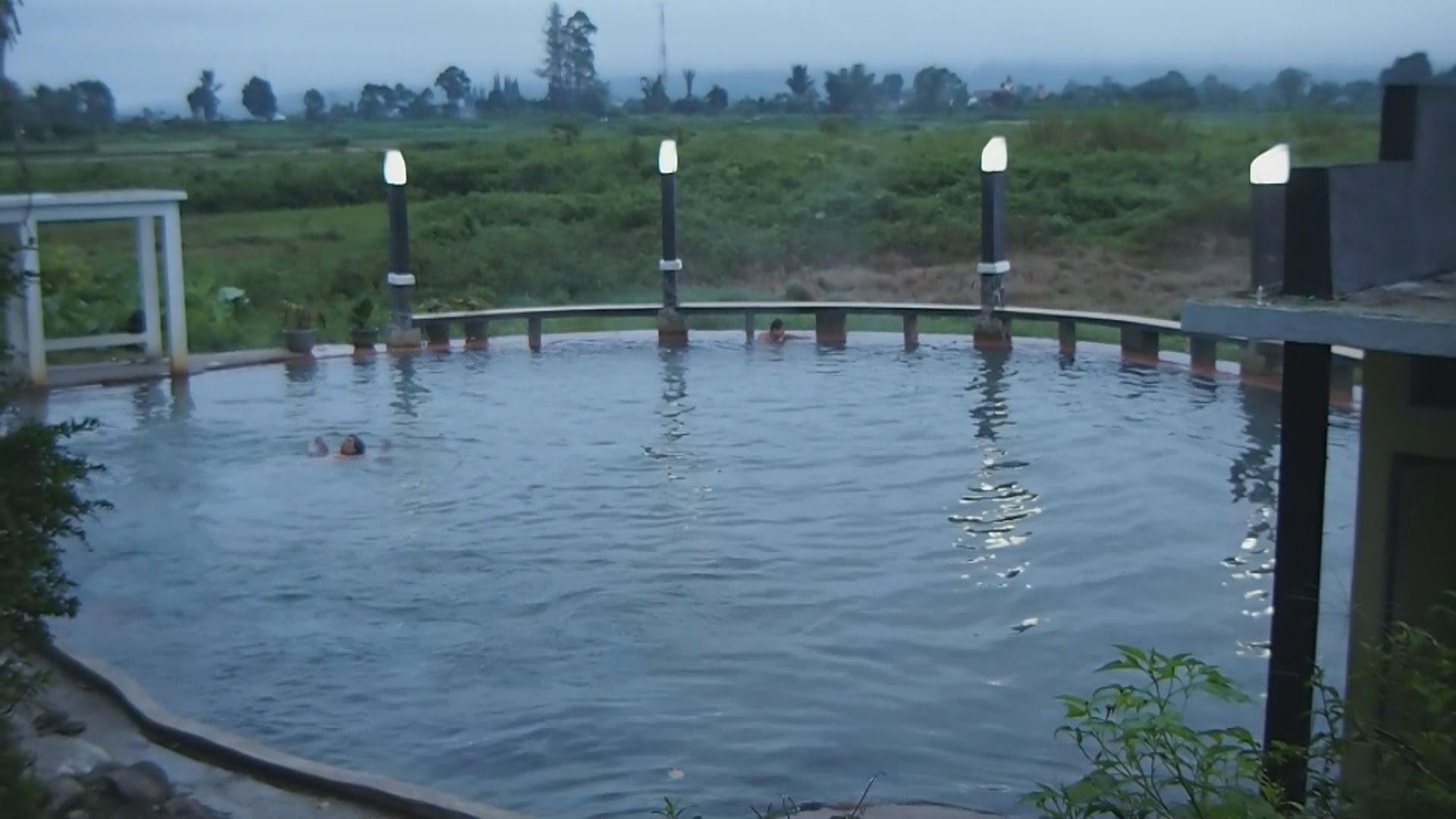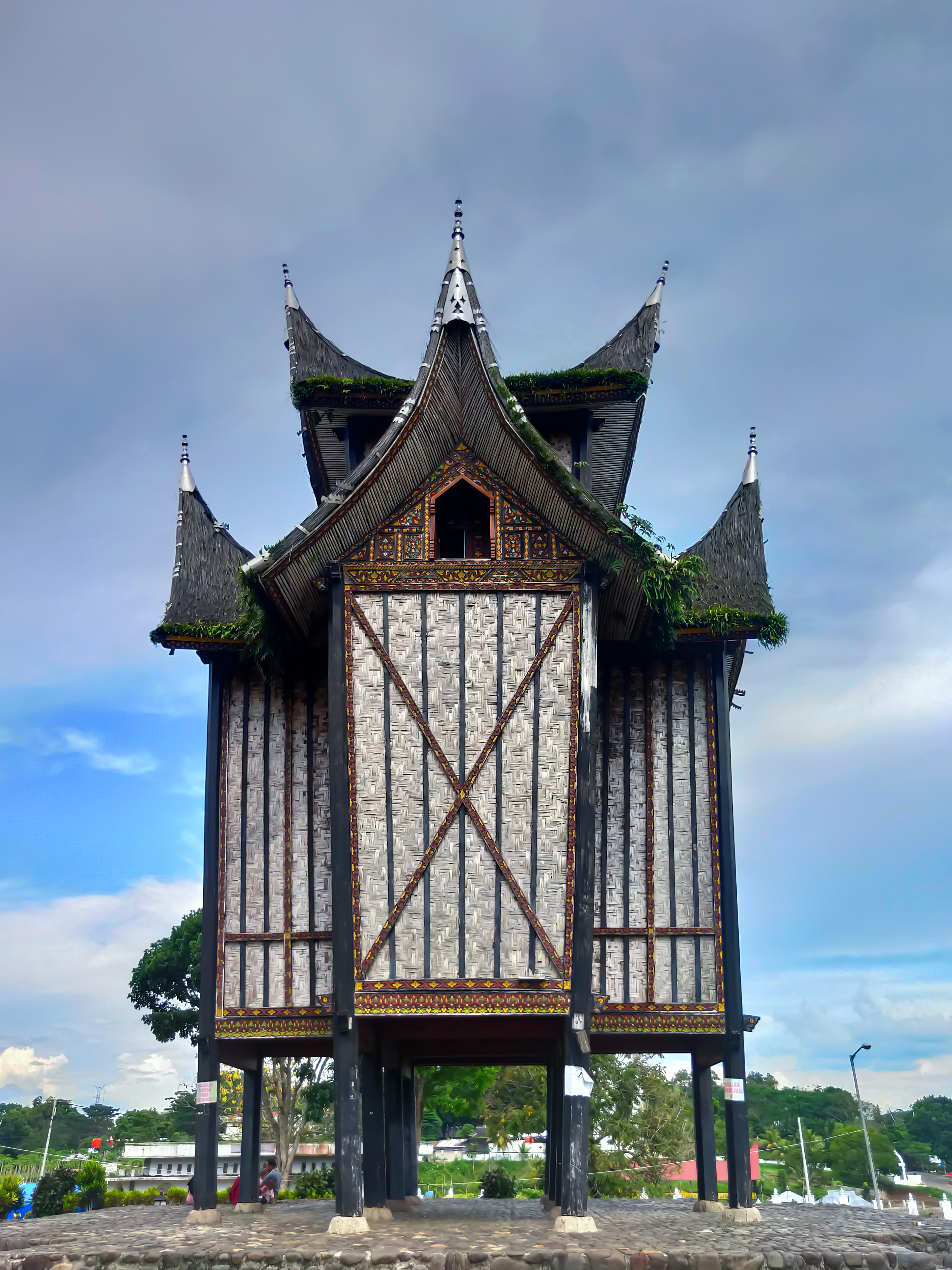|
Sopo (structure)
A sopo is a treasury structure in the architecture of the Toba Batak people from North Sumatra, Indonesia. Its form is similar to that of a Batak traditional house with the exception of being smaller in size and a construction ritual that is the opposite of a Batak house. Sopo is used as a repository for various items, e.g. rice, magical items, or trophies. Sopo can also be used as a meeting point for social activities. Description The word ''sopo'' is a Batak word which indicates a structure which is used to store items, whether it is to store rice (''sopo eme'', ''eme'' means "rice"), to store war trophies (e.g. wild boar or human skulls, or the smoked and dried hands of the enemies), or to store magic ritual items (e.g. the pustahas or magic batons) The sopo generally has similar appearance with the house of Batak Toba (''ruma''), but in the case of sopo, it is designed as an open structure as opposed to the closed structure of a house. The pavilion-like open space is used as ... [...More Info...] [...Related Items...] OR: [Wikipedia] [Google] [Baidu] |
Toba Batak People
Toba people (Surat Batak: ᯅᯖᯂ᯲ ᯖᯬᯅ) also referred to as Batak Toba people are the largest group of the Batak people of North Sumatra, Indonesia. The common phrase of ‘Batak’ usually refers to the Batak Toba people. This mistake caused by the Toba people being the largest sub-group of the Batak ethnic and their differing social habit to self-identify as merely Batak instead of ‘Toba’ or ‘Batak Toba’, contrary to the habit of the Karo, Mandailing, Simalungun, Pakpak communities who commonly self-identified with their respective sub-groups. The Toba people are found in Toba Samosir Regency, Humbang Hasundutan Regency, Samosir Regency, North Tapanuli Regency, part of Dairi Regency, Central Tapanuli Regency, Sibolga and its surrounding regions. The Batak Toba people speak in the Toba Batak language and are centered on Lake Toba and Samosir Island within the lake. Batak Toba people frequently build in traditional Batak architecture styles which are common o ... [...More Info...] [...Related Items...] OR: [Wikipedia] [Google] [Baidu] |
North Sumatra
North Sumatra ( id, Sumatra Utara) is a province of Indonesia located on the northern part of the island of Sumatra. Its capital and largest city is Medan. North Sumatra is Indonesia's fourth most populous province after West Java, East Java and Central Java, and also the most populous in the island of Sumatra. It covers an area of 72,981 km2. According to the 2020 census, the province's population in that year was 14,799,361. The mid-2021 official estimate is 14,936,148. North Sumatra is a multi-ethnic province. The Malay people are regarded as the natives of the east coast of the province, while the west coast of the province is mainly inhabited by the Batak (''Pakpak'', ''Angkola'' and ''Mandailing'' groups). The central highlands region around Lake Toba is predominantly inhabited by another ''Batak'' groups (''Toba'', ''Simalungun'' and ''Karo''). The Nias people are natives to ''Nias Island'' and its surrounding islets. With the opening of tobacco plantations in East S ... [...More Info...] [...Related Items...] OR: [Wikipedia] [Google] [Baidu] |
Indonesia
Indonesia, officially the Republic of Indonesia, is a country in Southeast Asia and Oceania between the Indian and Pacific oceans. It consists of over 17,000 islands, including Sumatra, Java, Sulawesi, and parts of Borneo and New Guinea. Indonesia is the world's largest archipelagic state and the 14th-largest country by area, at . With over 275 million people, Indonesia is the world's fourth-most populous country and the most populous Muslim-majority country. Java, the world's most populous island, is home to more than half of the country's population. Indonesia is a presidential republic with an elected legislature. It has 38 provinces, of which nine have special status. The country's capital, Jakarta, is the world's second-most populous urban area. Indonesia shares land borders with Papua New Guinea, East Timor, and the eastern part of Malaysia, as well as maritime borders with Singapore, Vietnam, Thailand, the Philippines, Australia, Palau, and India ... [...More Info...] [...Related Items...] OR: [Wikipedia] [Google] [Baidu] |
Batak Architecture
Batak architecture refers to the related architectural traditions and designs of the various Batak peoples of North Sumatra, Indonesia. There are six groups of Batak who speak separate but related languages: the Angkola, the Mandailing to the south, the Toba, to the north the Pakpak/ Dairi, the Simalungun, and the Karo. While the groups are now Muslim or Christian, elements of the ancient Batak religion remain, particularly amongst the Karo. The ''bale'' ("meeting hall"), ''rumah'' ("house"), and '' sopo'' ("rice barn") are the three main building types common to the different Batak groups. The ''rumah'' has traditionally been a large house in which a group of families live communally. During the day, the interior is shared living space, and at night, cloth or matting drapes provide families with privacy. Most Batak now live in modern homes, and many traditional houses are abandoned or in a poor state of repair. The architecture and village layouts of the six Batak groups als ... [...More Info...] [...Related Items...] OR: [Wikipedia] [Google] [Baidu] |
Pustaha
Pustaha ( Toba Batak: ᯇᯮᯘ᯲ᯖᯂ) is the magic book of the Toba Batak people of North Sumatra, Indonesia. The book contains magical formulas, divinations, recipes, and laws. The pustaha is written and compiled by a Batak magician-priest (datu). Etymology The name ''pustaha'' is borrowed from the Sanskrit word ''pustaka'' (Sanskrit पुस्तक) meaning "book" or "manuscript". This indicates an earlier influence of Hinduism on the culture of Batak Toba. Form and material Physically, a pustaha consists of two hardcovers (''lampak'') and pages made of softened tree bark (''laklak'') for the writings. The hardcover is usually carved with motifs of an ilik, a gecko which represents the deity Boraspati ni Tano, a beneficial earth deity of the Toba Batak people. The pages are made of the bark of the ''alim'' tree or the agarwood (Aquilaria malaccensis). The bark is softened in rice water, folded and secured between the two hardcovers. Alim tree can be found growing in the ... [...More Info...] [...Related Items...] OR: [Wikipedia] [Google] [Baidu] |
Tunggal Panaluan
A tunggal panaluan is a magic staff used by shamans of the Batak people, who live in the highlands of North Sumatra, Indonesia. Traditionally the tunggal panaluan is made from wood of a specific tree and carved with human figures and embellished with horsehair and cooked human brain, both procured from sacrificial victims. Shape Tunggal panaluan was carved out of the wood of Cassia javanica, the only tree from which the tunggal panaluan can be created. The tree occupies a central place in the ancestral myth of the Batak people, as well as the figures depicted on the tunggal panaluan. Tunggal panaluan was carved with human and animal figures arranged above each other. The human figure refer to a Batak myth that tells of incestuous twins. Animals found depicted in the tunggal panaluan include snakes, dragons, geckos and water buffaloes. Another type of magic staff, known as the tunggal malehat, depicts a human riding either a horse or a mythical beast. Use The tunggal panaluan wa ... [...More Info...] [...Related Items...] OR: [Wikipedia] [Google] [Baidu] |
Lake Toba
Lake Toba ( id, Danau Toba) ( Toba Batak: ᯖᯀᯬ ᯖᯬᯅ; romanized: ''Tao Toba'') is a large natural lake in North Sumatra, Indonesia, occupying the caldera of a supervolcano. The lake is located in the middle of the northern part of the island of Sumatra, with a surface elevation of about , the lake stretches from to . The lake is about long, wide, and up to deep. It is the largest lake in Indonesia and the largest volcanic lake in the world. Toba Caldera is one of twenty Geoparks in Indonesia, and was recognised in July 2020 as one of the UNESCO Global Geoparks. Lake Toba is the site of a supervolcanic eruption estimated at VEI 8 that occurred 69,000 to 77,000 years ago, representing a climate-changing event. Recent advances in dating methods suggest a more accurate identification of 74,000 years ago as the date. It is the largest-known explosive eruption on Earth in the last 25 million years. According to the Toba catastrophe theory, it had global consequences f ... [...More Info...] [...Related Items...] OR: [Wikipedia] [Google] [Baidu] |
Samosir Island
Samosir, or Samosir Island, is a large volcanic island in Lake Toba, located in the north of the island of Sumatra in Indonesia. Administratively, Samosir Island is governed as six of the nine districts within Samosir Regency. The lake and island were formed after the eruption of a supervolcano some 75,000 years ago. The island was originally a peninsula connected to the surrounding caldera wall by a small isthmus, which was cut through by the in 1907 to aid navigation. At , Samosir is the largest island within an island, and the fifth largest lake island in the world. World Island Information, Accessed June 7, 2006 It also contains two smaller lakes, and . Across the lake on the ... [...More Info...] [...Related Items...] OR: [Wikipedia] [Google] [Baidu] |
Tapanuli Utara
North Tapanuli Regency (''Tapanuli Utara'' - in Indonesian, "utara" means "north") is a landlocked regency in North Sumatra province, Sumatra, Indonesia. Its capital is Tarutung. The regency covers an area of 3,793.71 square kilometres and it had a population of 278,897 at the 2010 Census and 312,758 at the 2020 Census.Badan Pusat Statistik, Jakarta, 2021. Administrative districts The regency is divided into fifteen district A district is a type of administrative division that, in some countries, is managed by the local government. Across the world, areas known as "districts" vary greatly in size, spanning regions or counties, several municipalities, subdivisions o ...s (''kecamatan''), tabulated below with their areas and their populations at the 2010 CensusBiro Pusat Statistik, Jakarta, 2011. and the 2020 Census.Badan Pusat Statistik, Jakarta, 2021. The table also includes the location of the district administrative centres, the number of administrative villages (totalling ... [...More Info...] [...Related Items...] OR: [Wikipedia] [Google] [Baidu] |
Rangkiang
Rangkiang (also lumbuang) is a granary or rice barn of the Minangkabau people used to keep rice. The rangkiang is a distinctive feature of Minangkabau architecture. The structure is traditionally found in the courtyard of a '' rumah gadang'', the traditional house of Minangkabau people. Etymology The word ''rangkiang'' is a shortened version from the Minangkabau word ''"ruang hyang (Dewi Sri)"'' ("room of goddess (Dewi Sri)"), the goddess of rice. Architecture A ''rangkiang'' is a structure built over a raised pile foundation, an Austronesian legacy that can be found anywhere else in Indonesia. It has a distinguished roof shape known as ''gonjong'' ("spired") roofs, similar to a Minangkabau traditional house, the rumah gadang. The ''gonjong'' roof symbolically identifies it with buffalo horns. Similar to the rumah gadang, the roof of a rangkiang is traditionally a thatched roof made of palm fibre (''ijuk''), and it is also similarly decorated. The only opening to a rangkiang i ... [...More Info...] [...Related Items...] OR: [Wikipedia] [Google] [Baidu] |








